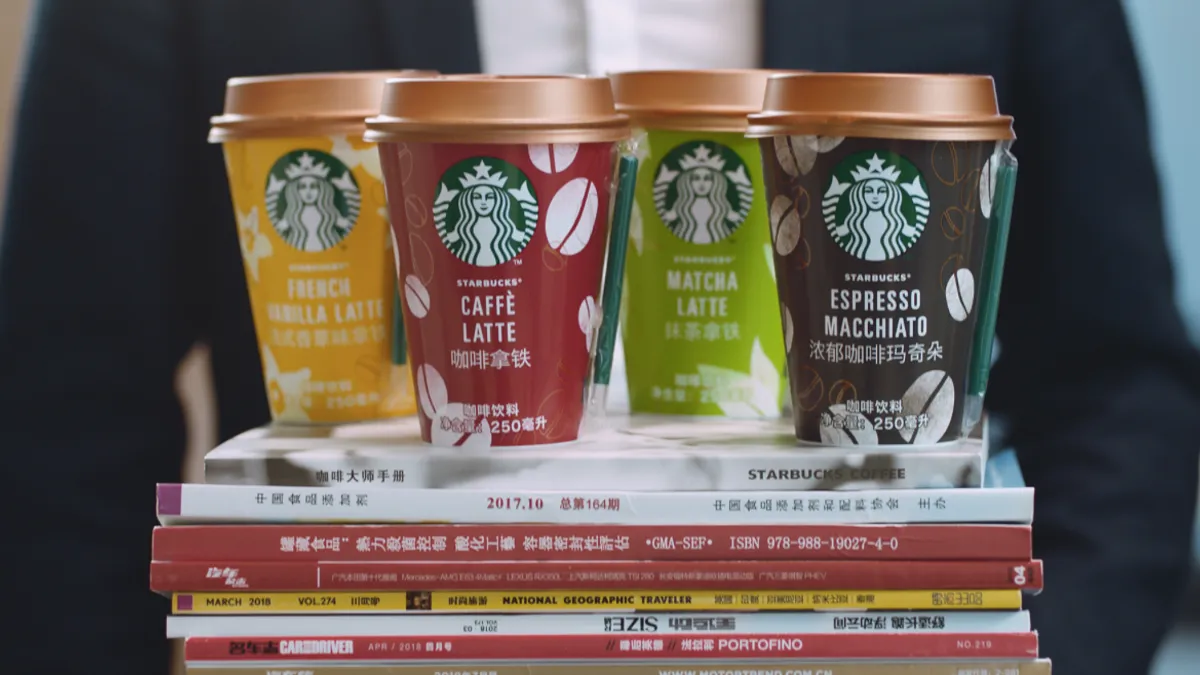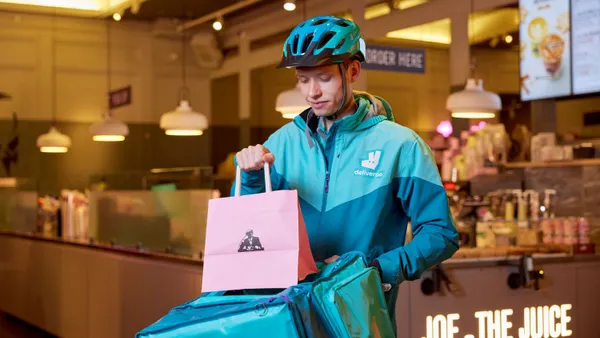Dive Brief:
- China, Starbucks' number one growth area, has taken to delivery so quickly the beverage giant is losing margin as the program scales, executives said on an earnings call Wednesday. The program launched in September of last year.
- Digital sales represented 10% of total sales in China in the quarter ($763 million) and 7% of that share was delivered. In the U.S., delivery orders make up less than 1% of the total.
- CFO Pat Grismer described the popularity of delivery in China as somewhat of a margin headwind because "delivery transactions are ... margin dilutive to our total margin." While still profitable, Grismer assured, delivery does bring down margins to an unspecified extent.
Dive Insight:
"In China what you see is the consumer base ... is much more digitally savvy than any other market in the world," said CEO Kevin Johnson, basing his assessment on the high percentage of customers paying via digital payment services like Alipay or WeChat Pay. In fact, growth in digital orders is owed in part to a partnership with Alibaba, Johnson said.
Starbucks delivery is available from 3,000 stores in 100 cities in China — covering 80% of the chain's network, according to President of International Channel Development and Global Coffee and Tea John Culver. The coffee-seller expects 1,400 net new stores in China in 2020.
Grismer said no matter the country, delivery is an important part of Starbucks' strategy to keep a leg up on competitors while growing the top line. "But it does come at the expense of what would otherwise be much stronger margin expansion on the back of the consistent comp growth that we're expecting going forward," Grismer said. The company posted 70 basis points of margin growth (to 21.7%) in its international segment for the quarter.
While some growth potential lies in expanding the store network and delivery coverage, more potential is likely in boosting consumption generally. The average person in China currently drinks four cups of coffee per year compared to 300 in the U.S., which Culver called "a huge opportunity."
Correction: In a previous version of this article, the launch date of Starbucks' delivery program in China was incorrect. It rolled out in September 2018.














